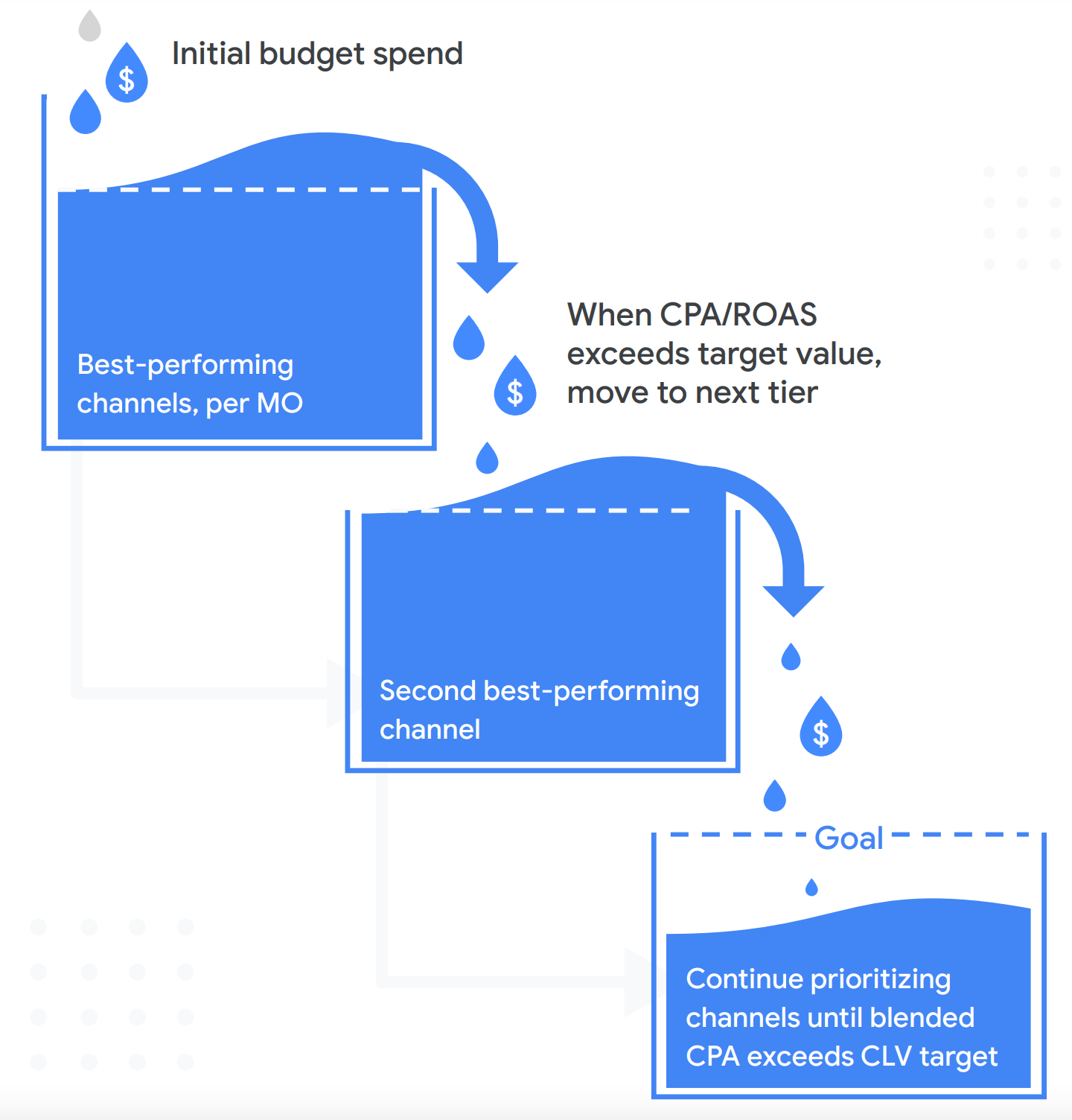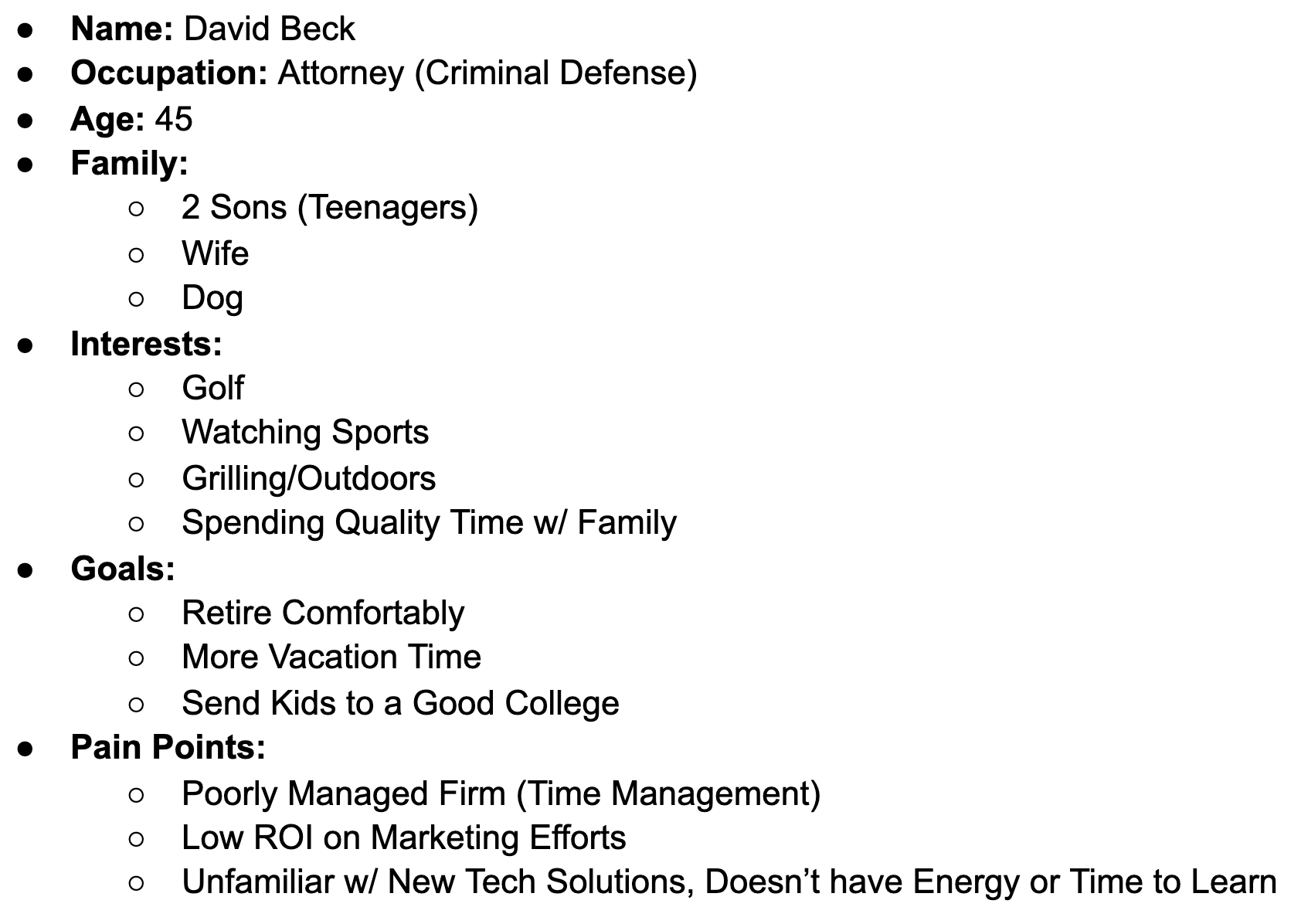Digital marketing isn’t easy, especially when you consider how quickly the best marketing practices can shift and change in the modern world.
But that doesn’t mean some tactics don’t last through the waves.
We’ve been in the marketing game for quite some time now (since 2002!), so we’ve learned how to build a marketing strategy that adapts and stands the test of time.
After reading this article, you’ll know some of the most critical digital marketing tactics to implement in your own campaigns and improve your digital marketing results.
So let’s get to it.
Digital Marketing Best Practices
These are the 10 most effective digital marketing techniques to implement today and get better results from your marketing efforts.
- Always set clear campaign goals
- Use conversion tracking to track performance
- Take advantage of automation and machine learning
- Allocate your budget to the best performing channels
- Perform audience segmentation and targeting
- Use retargeting to increase ROI
- Invest in SEO and Content Marketing
- Get help from experts
- Learn from your competitors
- Revise your digital marketing strategy regularly
1. Always set clear campaign goals
Before you run your first digital marketing campaign, there’s one step you should take first:
Define your critical campaign goals and metrics.
Imagine a pirate sailing out on a journey for treasure. I think we can both agree that it wouldn’t be very clever to do without a map.
And in the same way, running campaigns without a clearly defined goal isn’t a great way to net returns either. Luckily, it’s not too hard to define effective goals.
First, decide what result you want to get from the campaign.
Do you want more direct sales? If so, what kind of sales, online or offline?
Or are you more focused on increasing the flow of leads?
Or perhaps you’re looking to increase engagement with your audience.
The list of possible goals goes on. The important part is that we define that goal, and then establish a few key metrics, or KPIs, to measure that goal.
An effective goal is measurable and specific. “Make a lot of revenue,” for instance, wouldn’t be a great goal because it’s both vague and not measurable.
Instead, you’d be better off with the goal: “Reduce the Cost-Per-Acquisition(CPA) from the current $53 down to $40.”
Then, we’ve got a clear starting point and a clear goal to move towards. Once we have a goal, we can set a few metrics to help us measure the progress (or lack thereof). These key metrics are called KPIs.
Let’s say our goal was to generate 30% more online leads — in that case, our KPI wouldn’t be CPA or revenue, it’d be something along the lines of contact form submissions, calls, and response rates.
And similarly to how to define your overarching goal, ensure that the KPIs are easily measurable, highly specific, and relevant to the end result you’re looking for.
2. Use conversion tracking to track performance
If your marketing goal is the endpoint of the journey, your performance tracking is the map that tells you how far along you are.
Make a strong point to track your performance metrics as accurately and specifically as possible. The more data you have, the better you can optimize your campaigns.
The exact metrics you’ll have to measure depend on the marketing tactics you put into play.
But what is important is to have the right tracking mechanisms in place before running any kind of online campaign.
For example:
Before starting any Google Ads make sure that you have enabled conversion tracking. This way you’ll be able to track what users do after they click on your ads.
Same with Facebook Ads. Before running any campaigns, add the Facebook Pixel code to your website and configure the important events you want to track.
For SEO and content marketing, it’s a little less straightforward — you’ll need to do much of the tracking on your website and use data from Google Search Console, Google Analytics, and third-party tools to have an accurate picture of how your SEO and content marketing campaigns are performing.
Some Resources to Help You
- Google Search Console – a guide for beginners to Google Search Console.
- Google Analytics and SEO – how to use Google Analytics to track the performance of your SEO campaigns.
3. Take advantage of automation and machine learning
Let’s face it, there’s far too much menial work involved in marketing, and it can feel like a massive time sink. I’m sure we’d all rather be spending our valuable hours on the directly profitable tasks.
Whether it’s data entry, writing emails, or managing the ins and outs of an ad campaign, all of this work takes a ton of time. And the thing is, all of this work doesn’t need to take this much time out of your day — at least not as much of your time.
Instead of manually doing all of the work, one of the best ways you can increase your bottom line is by automating various parts of your marketing operations.
One classic example is email marketing.
Instead of taking the time and resources to manually email each one of your email subscribers, why not automate your email funnel?
With programs like MailChimp or Constant Contact, you can set up completely hands-off marketing funnels through email — saving you hundreds of hours. You can also automate tasks like email responses and more.
But email isn’t the only thing you can automate, Facebook and Google introduce new features all the time to help you automate your ad campaigns and audience-building efforts.
Lookalike audiences, for instance, help you to create entirely new groups of potential customers on Facebook, while dynamic campaigns can help you bid for ad space without having to babysit each campaign.
The list of ways you can automate a marketing campaign goes on, but here are just a few of them:
Google Smart Campaigns – With Google Smart Campaigns, you can have Google do much of the legwork for you by finding potential customers and showing them your ads across Google Maps, Google Search, Youtube, and more — all while staying within your set budget.
Automated Bidding – Across various ad platforms, you can set your campaigns to bid for ad spots in important places all on autopilot, saving you the time and money of doing it manually.
Considering the literal thousands of places any ad could be placed, large ad campaigns would be nearly impossible without automated bidding.
Facebook Automated Campaigns – Similar to Google’s smart campaigns, Facebook smart campaigns allow you to let Facebook’s algorithm seek out potential buyers for you using lookalike audiences. This means you can build ad campaigns with massive reach while maintaining a reasonable bottom line.
4. Allocate your budget to the best performing channels
One of my favorite marketing models is one named “The Waterfall” by Google’s marketing team.

Instead of focusing on multiple channels at once, you should find the best performing channel and focus your resources on that. You only want to switch your focus once each channel has reached its full potential.
Here’s the classic example of waterfall marketing in action:
A SaaS company is splitting its budget up between multiple PPC channels: Google, Facebook, and Twitter.
Those channels all have room for growth and have a CPA of $24, $35, and $46 respectively.
In this situation, the SaaS company can do one of two things—
Focus on growing all three channels at the same time.
Or
Drop Facebook and Twitter to focus their resources on the most profitable channel, Google.
With the waterfall method, they can get the most out of every dollar spent and grow their Google campaign to its full potential significantly faster. Once Google’s reached its limit, then they can work on the other channels.
In essence, it comes down to this:
Focus on your best performing channel.
Maximize your returns until you hit the channel’s full potential.
Continue to the next channel.
While the waterfall may seem too simple to be true, it’s the best way to achieve the highest possible revenue generated from each dollar spent; we’ve even put it into use for our own clients.
5. Perform audience segmentation and targeting
The odds are that — unless you’re marketing to an army of clones — your audience doesn’t consist of just one demographic
And as any good marketer knows, different crowds call for different marketing messages.
Let’s use a SaaS company as an example.
If you run a SaaS company, your ideal clients are probably small or medium businesses.
But is that enough demographic info to create a whole marketing campaign around?
Probably not.
To craft high-converting messages, you need to get down to the finest details of your audience and then segment that audience accordingly.
The way you market towards an SMB in the food industry will be vastly different from a client that runs a retail operation, for instance.
And to break your audience down into specific segments, you’ll need to create a set of customer avatars.

For those unfamiliar with the term, customer avatars are “imaginary people” that marketing teams create to represent large groups of people within a target market.
If your target market consists of criminal defense attorneys, your main avatar may look like this:

Now, some of you might wonder why all of this is relevant.
Why do we need to know David has 2 sons? Or why he wants more vacation time?
And the answer is simple: The more we know about David, the better we can craft marketing messages for him.
Of course, David doesn’t actually exist, he’s just a rough approximation for the average customer for an attorney business.
If most of your customers have poorly managed firms with lots of wasted time, that’s more “marketing ammo” you can use to drive that pain point home.
And with all that said, we still need to know how to get that information. Luckily, it’s not all that hard. First, you can use your existing customer base to get a good idea of what your audience looks like. But those are far from the only methods.
You can also collect the info by surveying your customers, for instance, or tracking prospect activity at each stage of your marketing funnels.
Just remember, the more marketing data you have on your target audience, the better.
6. Use retargeting to increase ROI
Prospects that click on retargeting advertisements are up to 70 percent more likely to convert than those who aren’t retargeted.
And considering the vast majority of customers won’t purchase on the first visit to your site, that’s massive.
Retargeting is a unique strategy because it allows you to get more out of each of your other marketing channels — It’s not an exaggeration to say that retargeting is a must for brands that want to maximize their profit.
If you don’t already have a dedicated section of your budget for retargeting campaigns, today is the day to start planning for one.
Related Resources
- How to make money with digital marketing – How to use remarketing and other techniques to make money from your digital marketing campaigns
- How to make money with Facebook ads – How to run effective Facebook campaigns (includes remarketing guide)
7. Invest in SEO and Content Marketing
49 percent of marketers report that organic traffic generates the highest ROI out of their marketing channels. And even if it isn’t their highest ROI, SEO still remains a valuable channel for many more of them.
One of the main drawbacks with SEO, though, is that it needs time to build momentum.
With SEO marketing, you likely won’t see results for a few months from the start, which is to stay that you should get started as quickly as possible.
If paid traffic is a short-term solution to generate revenue, organic traffic is the compounding investment that’ll continue to rake in profit.
And just like any compounding investment, the earlier you start, the better.
Resources to Learn More About SEO and Content Marketing
- Best SEO Certifications – a list of the best courses to follow to become an expert in SEO.
- Best Content Marketing Courses – follow any of the courses on the list for content marketing best practices.
8. Get help from experts
In a previous article, I discussed the drawbacks of being a jack-of-all-trades as opposed to an expert in a few trades, and that same principle applies here too.
When it comes to marketing, one of the best things you can do to work efficiently is focus on your strengths. And if your marketing campaign calls for skills outside of your own toolkit, don’t be afraid to bring in experts to help out.
If you’re an SEO expert, you don’t have to spread yourself thin to implement a PPC campaign.
Instead, you can outsource your PPC marketing to a PPC specialist and allow both parties to focus on what they do best.
That’s not to say you can’t increase your own skillset, just take time to carefully decide whether it’s more profitable to teach yourself a new skill or hire an expert to help instead.
Here is a list of the most popular services offered by marketing agencies.
9. Learn from your competitors
Your competitors aren’t just opponents in the marketing battlefield, they’re also some of your greatest sources of information.
Think about it; your main competitors are similarly-sized companies, with similar products and similar audiences — it’s practically the perfect case study for you to learn from.
Make a regular practice out of analyzing your competition’s marketing strategies. Find the pieces of their approach that work well and the parts that work not-so-well, then use that information to improve your own tactics.
To do this, you can use one of the many dedicated tools available on the market. For SEO analysis, you can use Semrush, Ahrefs, or Moz.
For Facebook advertising, you can browse the FB Ads library, and for Google, you can use their Insights Report to get the job done.
10. Revise your digital marketing strategy regularly
If there’s one important thing to remember about marketing, it’s that no one gets it perfect the first time.
Marketing is all about testing, collecting data, and using that data to improve your approach before repeating the process. All that’s to say that you need to revisit the drawing board regularly and reflect on what can be improved.
This also means that staying up to date with the latest marketing trends is vital too.
Key Learnings
Digital marketing is a complex process with many moving parts, but by mastering the essentials first, you can build a strong foundation that supports your business through the waves.
That foundation should consist of consistent experimenting to find new techniques, revisions to old tactics, and an effective way to measure relevant metrics.
It should also involve strong long-term strategies like SEO, blogging, and various forms of content marketing.
Learn to build that foundation and avoid stagnation, and you’ll have a business that not only stands the test of time but outpaces the competition too.




Leave a Reply